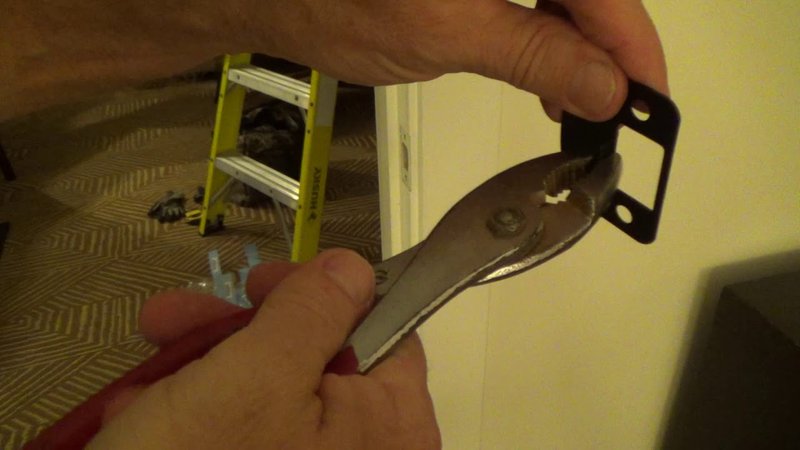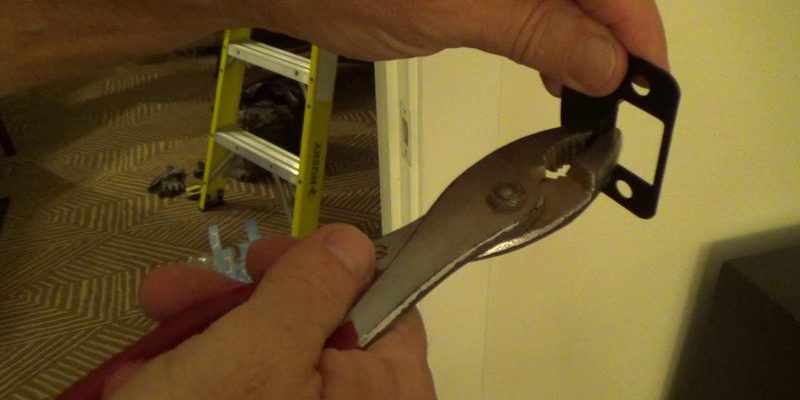
So, if you’re ready to dive in, grab your tools, and let’s get started. Whether it’s a stubborn front door or a pesky bedroom door, adjusting the strike plate is something you can handle without calling in a pro. In this guide, I’ll walk you through the steps to make sure your door latches smoothly every time.
What Is a Door Strike Plate and Why Is It Important?
Before we jump into the adjustment process, it’s helpful to understand what a strike plate does. The strike plate is a small piece of metal attached to the door frame where the latch of your door fits when it closes. Think of it as the door’s home base—a secure point where everything aligns. If the strike plate is misaligned, the latch won’t catch properly, and your door can swing open when you least expect it.
A properly installed strike plate not only keeps your door closed; it also enhances your home’s security. If your door doesn’t latch, it means someone could easily push it open. So, ensuring the strike plate is correctly adjusted isn’t just about convenience; it’s about safety.
When you adjust the strike plate, you’re making tiny tweaks that can have a big impact. So, let’s explore how to check its position and what tools you’ll need to get started.
Tools You’ll Need for the Job
Before diving in, gather some simple tools. Having everything on hand will make the process smoother and quicker. Here’s what you’ll need:
- Screwdriver: A flathead or Phillips screwdriver depending on your screws.
- Wood shim: This will help you gauge the alignment.
- Drill (optional): If you need to create new holes or make adjustments.
- Measuring tape: For precise measurements, though sometimes a visual check will suffice.
You might have these tools lying around, but if not, swinging by a hardware store is an easy fix. Once you have everything you need, you can move confidently into the next step.
Identifying the Problem with Your Strike Plate
Hold up, before we get our hands dirty, let’s figure out what’s wrong. Is your door simply not latching? Or does it stick, making it a pain to open and close? Here’s how to identify the issue:
1. Check the Alignment: Close the door gently and see if the latch lines up with the hole in the strike plate. If it’s too high, too low, or off to one side, you’ve found your problem.
2. Look for Wear and Tear: Inspect the strike plate and the latch. Is there any visible damage? Sometimes, a bent strike plate needs a little TLC to work right again.
3. Listen for Engagement: As you close the door, listen carefully. If you hear a *thud* instead of a *click*, the latch isn’t engaging properly, signaling a misalignment.
Identifying the issue early saves time later on. If you find that the strike plate is the problem, it’s time to adjust it.
How to Adjust the Strike Plate
Ready to get to work? Adjusting the strike plate is straightforward. Follow these steps:
1. Loosen the Screws: Use your screwdriver to slightly loosen the screws on the strike plate. Don’t remove them yet; just loosen enough so the plate can move.
2. Adjust the Position: Shift the strike plate up, down, or sideways as needed. Use your wood shim to check the alignment. Slip the shim between the door and the frame, then adjust the plate so the shim fits snugly without forcing the door.
3. Tighten the Screws: Once you’ve got it where it needs to be, carefully tighten the screws back up. Be careful not to over-tighten, which can strip the holes and create even more issues down the line.
4. Test the Door: Close the door to ensure the latch engages properly. If it still doesn’t catch, repeat the adjustment until it’s just right.
Adjusting a strike plate can take a couple of tries, so don’t get discouraged. Each tweak gets you closer to a perfect latch.
Common Problems and Troubleshooting
Sometimes, despite our best efforts, things don’t go as planned. Here are a few common problems you might encounter when adjusting your strike plate, along with some simple fixes:
– Strike plate hole too small: If the hole in the strike plate is too small for the latch, you might need to widen it slightly with a drill. Just take it slow and make small adjustments so the door fits correctly.
– Misalignment due to door sagging: Over time, doors can sag due to weight or age. If adjusting the strike plate doesn’t help, you might need to check the hinges. Tighten any loose screws or replace worn-out hinges if necessary.
– Wear and tear: Sometimes, the strike plate itself may be damaged, which means you should consider replacing it. A new strike plate is inexpensive and can make all the difference.
Remember, trial and error is part of the DIY process. Just stay patient, and you’ll find the right adjustments.
When to Call in a Professional
While adjusting a door strike plate is often a DIY job, there are times when it makes sense to call in a professional. Here are a few scenarios where you might want to hand off the wrench:
– Extensive door or frame damage: If your door frame is warped or damaged, it might require expertise to repair. A pro will know the best way to fix it without compromising the door’s integrity.
– Security concerns: If the misalignment means your door isn’t secure, it’s better to let an expert handle it. You want to ensure your home stays safe at all times.
– Multiple doors affected: If you notice that multiple doors in your home are having the same issue, it may indicate a larger problem, like settling of your home’s foundation. At that point, a professional assessment is wise.
Sometimes, it’s best to know your limits and when to ask for help. After all, a properly functioning door should be your priority.
Final Thoughts
Adjusting a door strike plate might seem daunting at first, but with a few tools and some patience, you can get it done. It’s like tuning a guitar; it takes a little effort, but the music it produces (or in this case, the smooth closing and latching of doors) is well worth it.
Now that you understand the basics—what the strike plate is, how to adjust it, and when to call for help—you’re well on your way to ensuring your doors function smoothly. Give it a try! You might find that a little DIY goes a long way in making your home feel more secure and comfortable. Happy adjusting!
